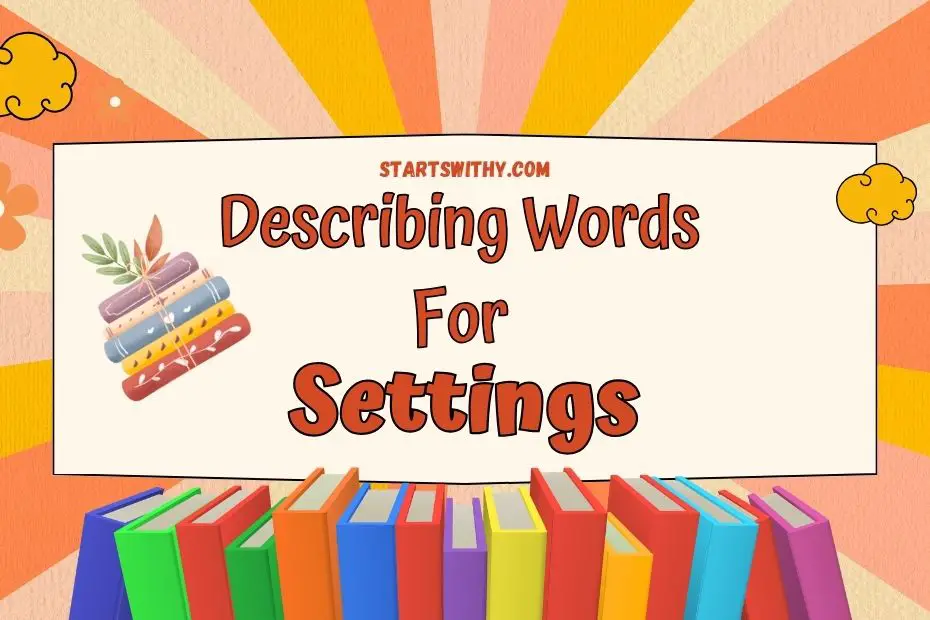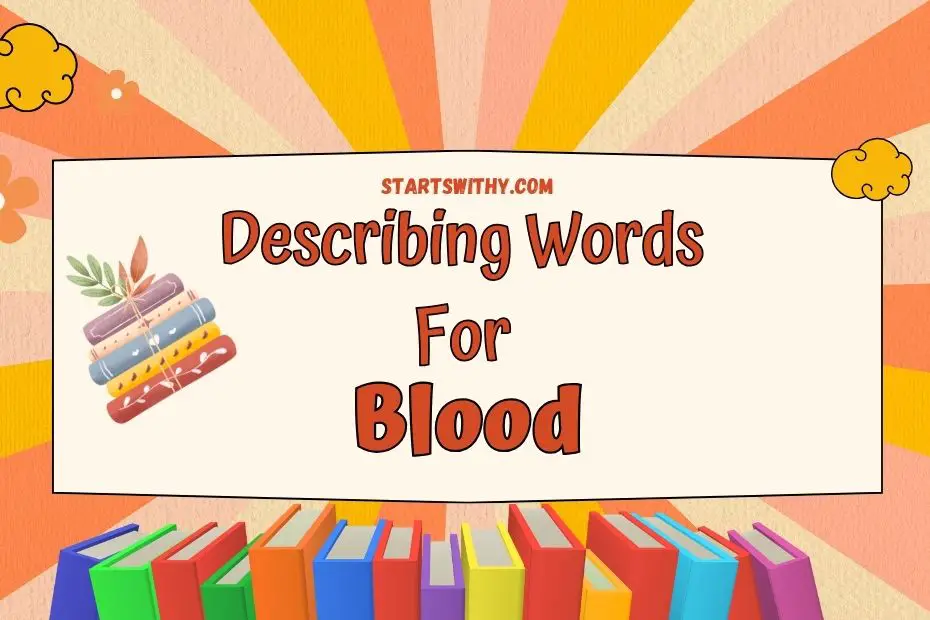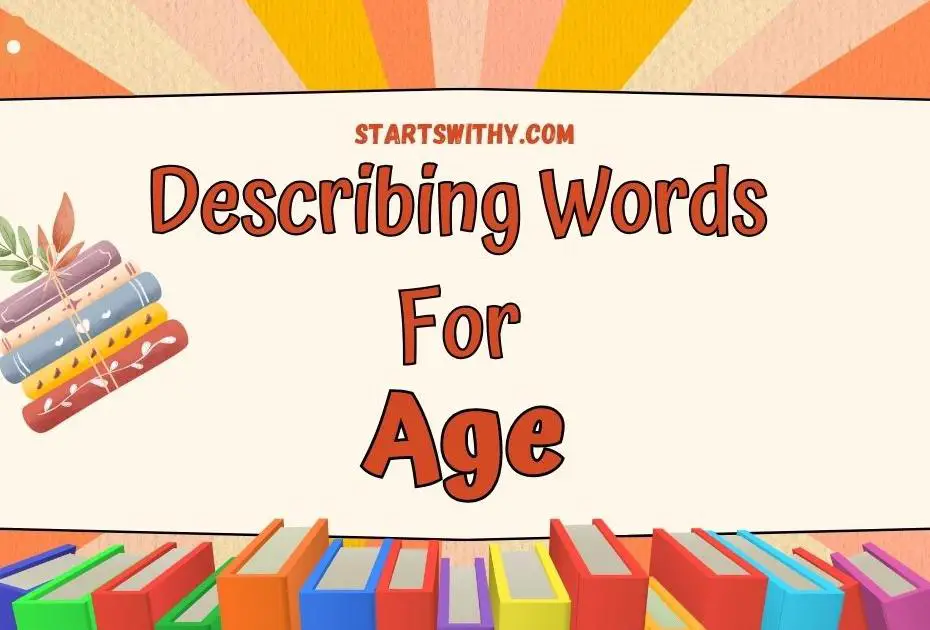When it comes to creating vivid and immersive scenes in writing, the power of descriptive adjectives cannot be underestimated. Whether you’re crafting a story, painting a picture with words, or simply trying to set the mood, the right adjectives can bring any setting to life. In this article, I’ll be sharing a collection of adjectives that will help you describe settings in a way that captivates your readers and transports them to another world. From serene and tranquil landscapes to bustling and vibrant cityscapes, get ready to expand your descriptive vocabulary with these examples of adjectives for settings.
Imagine a lush, verdant forest where sunlight filters through the canopy, casting dappled shadows on the moss-covered ground. Or picture yourself strolling along a pristine, sandy beach, feeling the warm grains of sand between your toes as the gentle ocean breeze caresses your skin. These are just a few examples of the countless settings that can be brought to life with the right choice of adjectives. Whether you’re a writer, a poet, or simply someone who loves to paint pictures with words, this article will equip you with a range of descriptive adjectives to enhance your storytelling and create memorable settings that will leave your readers wanting more. So let’s dive in and explore the world of adjectives for settings together.
How to Describe settings? – Different Scenarios
When it comes to storytelling, creating vivid and immersive settings is essential. Descriptive adjectives play a crucial role in bringing these settings to life and captivating readers. In this section, I’ll provide you with some valuable tips on how to describe different scenarios to enhance your storytelling skills. So, let’s dive in!
- Be Observant: To effectively describe a setting, you need to observe your surroundings and pay attention to the details. Take note of the sights, sounds, smells, and textures that make up the environment. This will help you create a rich and realistic description that engages your readers’ senses.
- Choose Specific Adjectives: Specific adjectives add depth and specificity to your descriptions. Instead of simply saying “the sky was blue,” try to be more precise. For example, you could say, “the sky was a vibrant sapphire blue, dotted with puffy white clouds.” This level of detail helps set the scene and paints a more vivid picture in the reader’s mind.
- Use Comparisons and Analogies: Comparisons and analogies can be powerful tools in describing settings. By comparing elements of the setting to something familiar, you can evoke a strong visual image. For instance, you could describe a bustling city street as “a river of people flowing through a concrete jungle.”
- Utilize Emotionally-Charged Adjectives: Don’t forget to tap into the power of emotions. Use adjectives that evoke emotions to create a deeper connection between the setting and the reader. For example, instead of just describing a beach as “sunny and sandy,” you could use adjectives like “serene,” “tranquil,” or “invigorating” to convey a specific atmosphere.
- Consider the Time of Day: The time of day can significantly influence the atmosphere of a setting. Whether it’s the golden hues of a sunset or the eerie shadows of a moonlit night, describing the lighting and overall ambiance can greatly enhance your storytelling.
- Incorporate Sensory Language: Engage your readers’ senses by incorporating sensory language into your descriptions. Describing the smells, sounds, and textures of a setting can transport your readers into the scene. For instance, you could describe a rainy day as “the earthy scent of wet soil, the rhythmic patter of raindrops on the roof, and the chill of dampness in the air.”
Describing Words for settings in English
As a writer, I know that using the right adjectives is crucial in creating vivid and immersive settings in storytelling. Whether you are describing a peaceful garden, a bustling city street, or a serene beach, choosing the perfect words can transport your readers to a whole new world. In this section, I will share some examples of descriptive words that you can use to bring your settings to life.
Outdoor Settings
When describing outdoor settings, it’s important to consider the elements and overall ambiance. Here are some adjectives to help you paint a picture:
- Lush: The vibrant green trees and abundance of colorful flowers create a lush and enchanting garden.
- Breathtaking: From the top of the mountain, I gazed at the breathtaking view of endless rolling hills.
- Serenity: The tranquil lake exuded a sense of serenity, with its calm waters and peaceful surroundings.
Urban Settings
City streets can be vibrant, chaotic, and full of energy. Here are some words that capture the essence of urban settings:
- Hustling: The streets were filled with hustling commuters, rushing to catch their trains.
- Glimmering: As the sun set, the city’s skyscrapers transformed into a glimmering skyline.
- Vibrant: The lively market was a vibrant display of colors, sounds, and smells.
Natural Settings
Nature offers a wide array of breathtaking settings. Here are some adjectives to describe the beauty of the great outdoors:
- Majestic: The towering mountains stood in all their majestic glory, untouched by human hands.
- Tranquil: The calm, still lake provided a tranquil setting for a leisurely boat ride.
- Idyllic: The idyllic meadow, filled with wildflowers and chirping birds, was a perfect spot for a picnic.
Remember, these are just a few examples to get your creative juices flowing. With the right adjectives, you can transport your readers into the worlds you create. Don’t be afraid to experiment and find the perfect words that truly capture the essence of your settings.
Now that you have a grasp on using descriptive words for settings, let’s move on to another important aspect of storytelling: using comparisons and analogies.
Adjectives for settings
As a writer, I understand the importance of descriptive adjectives in creating vivid and immersive settings in storytelling. In this section, I will explore the use of adjectives to bring settings to life. Let’s dive in!
Positive Adjectives for Settings with 12 Example Sentences
When painting a picture of a setting, positive adjectives can make all the difference in capturing the mood and atmosphere. Here are twelve examples of positive adjectives and how they can enhance a setting:
| Adjective | Example Sentence |
|---|---|
| Serene | The peaceful lake mirrored the serene sky. |
| Vibrant | The city streets were vibrant with life and color. |
| Majestic | The majestic mountains towered above the valley. |
| Tranquil | The tranquil forest was a haven of peace. |
| Enchanting | The enchanting garden was filled with blooming flowers. |
| Lush | The lush meadows were carpeted in emerald green. |
| Idyllic | The idyllic beach was a paradise of white sand and crystal-clear water. |
| Whimsical | The whimsical carnival was a joyous spectacle. |
| Breathtaking | The breathtaking sunset painted the sky in hues of gold and pink. |
| Picturesque | The picturesque village nestled among rolling hills. |
| Quaint | The quaint cottages lined the charming cobblestone street. |
| Serendipitous | The serendipitous encounter took place in a hidden garden. |
These adjectives help transport readers into the worlds being created, allowing them to vividly imagine the settings and feel a sense of immersion.
Negative Adjectives for Settings with 5 Example Sentences
To create contrast and evoke certain emotions, negative adjectives can be just as effective in describing settings. Here are five examples of negative adjectives used to convey a different mood or atmosphere:
| Adjective | Example Sentence |
|---|---|
| Dreary | The abandoned house stood in a dreary, desolate landscape. |
| Menacing | The dark alley felt menacing and filled with unknown dangers. |
| Chaotic | The chaotic marketplace buzzed with frenzied activity. |
| Barren | The barren desert stretched endlessly under the scorching sun. |
| Foreboding | The foreboding castle was shrouded in darkness and mystery. |
These negative adjectives help set the tone and create a sense of tension or unease within the settings, captivating readers in a different way.
Keep in mind that the choice of adjectives depends on the desired effect and context of the story. Experimenting with different adjectives can add depth and richness to your storytelling skills.
Synonyms and Antonyms with Example Sentences
Synonyms for settings
When it comes to describing different settings, there are many synonyms that can help create a vivid and immersive experience for readers. Here are some examples of synonyms for settings along with their example sentences:
| Synonym | Example Sentence |
|---|---|
| Location | The location of the story was a quiet beach town. |
| Environment | The environment of the scene was a bustling city street. |
| Surroundings | The protagonist found themselves in unfamiliar surroundings. |
| Atmosphere | The atmosphere of the setting was eerie and mysterious. |
| Ambience | The cozy ambience of the room made the characters feel at ease. |
Using these synonyms can help add depth and richness to your storytelling, allowing readers to fully immerse themselves in the world you create. Experimenting with different synonyms for settings can help you find the perfect word that sets the desired tone and atmosphere.
Antonyms for settings
While synonyms can enrich your descriptions, antonyms can provide contrast and variety in your storytelling. Here are some examples of antonyms for settings along with their example sentences:
| Antonym | Example Sentence |
|---|---|
| Indoor | The characters longed to escape the indoor setting and explore the outdoors. |
| Urban | The story begins in a small, quiet town, far away from the busy urban setting. |
| Manmade | The characters ventured into the depths of the unspoiled setting, far from any manmade structures. |
| Daytime | As the night fell, the setting transformed from a vibrant daytime scene to a tranquil nighttime setting. |
| Peaceful | The busy city streets were a stark contrast to the chaotic setting of the protagonist’s apartment. |
By using antonyms for settings, you can create a dynamic narrative that keeps readers engaged and intrigued. The juxtaposition of contrasting settings can add depth and complexity to your storytelling, making it more memorable for your audience.
Remember, choosing the right adjectives, synonyms, and antonyms for settings is crucial in creating a captivating story. By carefully selecting the words you use, you can transport your readers into the worlds you create and set the desired tone and atmosphere without relying on a conclusion paragraph or sentence.
Conclusion
In this article, we have explored the significance of descriptive adjectives in crafting captivating settings for storytelling. By using synonyms and antonyms, we can create a world that is not only visually stimulating but also emotionally engaging. From location to atmosphere, we have examined various types of settings and provided examples of descriptive words that can bring them to life.
By carefully selecting the right adjectives, synonyms, and antonyms, we can set the tone and atmosphere of our stories, allowing readers to fully immerse themselves in the narrative. Whether it’s an urban environment or a peaceful countryside, the power of descriptive language lies in its ability to transport readers to different worlds.
Remember, the key to creating vivid and immersive settings is to choose words that evoke the desired emotions and sensations. So, next time you embark on a storytelling journey, don’t forget to harness the power of descriptive adjectives to paint a picture that captivates your audience and leaves a lasting impression.



